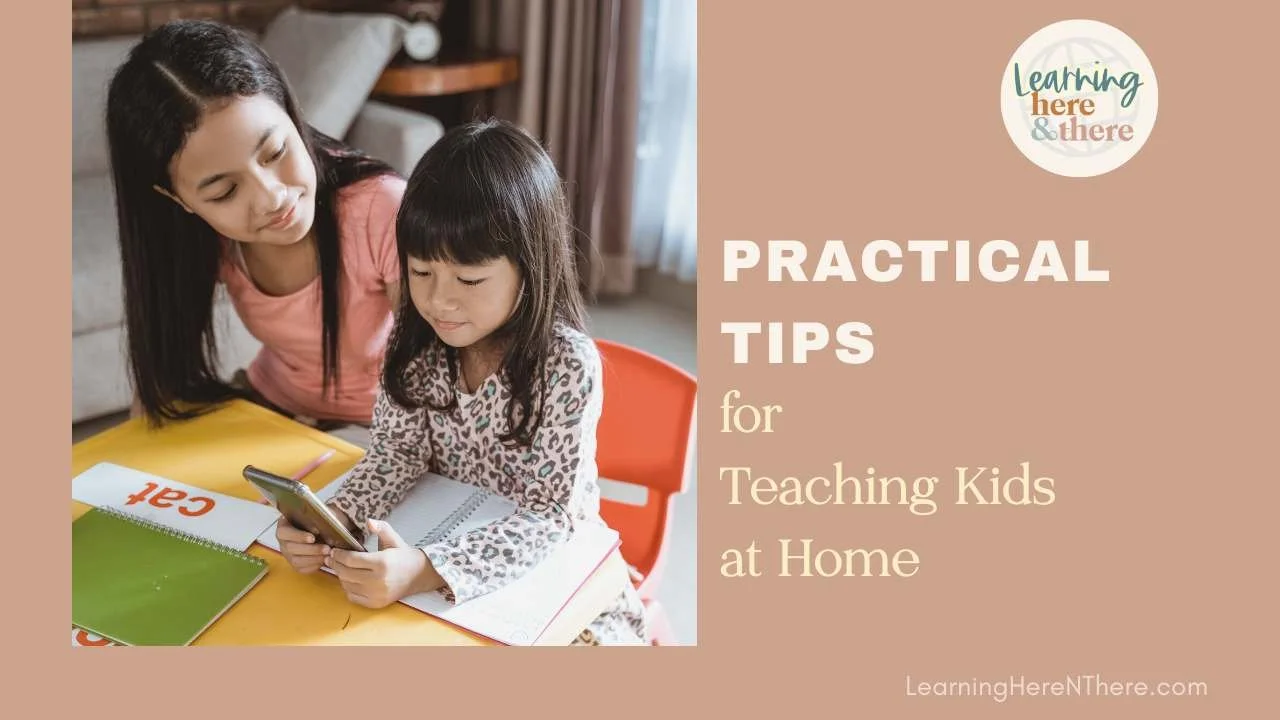Practical Tips for Teaching Kids at Home
Whether you are helping your kid on their homework, tutoringa struggling child, or suddenly find yourself homeschooling, there are some thingsyou can do to make teaching your kids at home go more smoothly.
First off, make sure everyone is fed. If you or your child(ren) are hangry due to low blood sugar…nothing good will be accomplished.
Minimize distractions. Turn off the television. If you’re working near a window, you may need to close the curtain. Give the younger siblings something quiet to do. (Try a busy bag or sensory bin.)
Remember: short bursts of work will be far more productive than a marathon session of “learning.”
Pay attention to your child’s signals. If you reach the point of frustration (for you or the child) …you’ve gone too far. Take a break and go do something fun or calming. When you come back to tackle the topic, break it down into micro steps to see where exactly the problem is. Or maybe the child simply isn’t developmentally ready for it yet. Let it go.
Try to teach to your child’s learning style. If you have a kid like mine who likes to gab, let her recite, dictate, or explain things orally instead of writing everything out. If your child is a mover and a shaker (can’t seem to sit still), let them stand during work time and try to involve movement as much as possible in their lessons. (Have kids practice their spelling words by using their body to form the letters.) Pinterest is full of ideas for gross motor activities for different topics. Of course, kids need to practice their writing skills (and other things that don’t fall into their preferred learning style) but keep these practice sessionsshort with a goal at the end such as snack time or play time.
Take Brain Breaks. If the eyes start to glaze over, or the head goes down on the table, or you see other signs of fatigue or boredom, then it’s time for a brain break. Let the child get up and do something fun and preferably active.
Let the child teach the adult. Kids LOVE being the teacher. This is a surefire way to get a kid involved in a lesson they don’t actually want to do. Sometimes, I just pretend that I’m not understanding the directions or how to do something, and the child I’m working with will usually jump right in and start explaining it to me and end up doing it for me.
Use a timer. This can be a great way to help kids stay on task. It can also be a good motivator to just stick it out for a few more minutes knowing the session of hard work is about to end. It’s great for kids who need help with transitions (They will know a change is coming). Read more about ways to use timers here.
Find fun or real-life ways to practice skills without a worksheet. For example, to practice handwriting/ letter formation, maybe the child can help you make the grocery list. To practice adding skills, play a board game and have the child be the score keeper. Work on calculating time in a natural way as you go through your day by asking questions. “How much time do we have until snack time?” Practice fractions by baking together.
Take turns reading. Reading for long periods of time can be difficult if a child hasn’t yet developed the stamina for it. Instead, sit side by side and take turns reading pages of the same book. Not only will this increase their interest in the story because they’ll hear it coming from a fluent reader which allows them to be free to just listen and enjoy. It will also help them hear a good example of reading with inflection (pausing at commas, emphasizing exclamation marks, etc).
Be together. Giving a child a worksheet to do and then wandering off usually doesn’t work well for lots of reasons. Kids don’t like to be alone for one, and they’re not the greatest at keeping themselves motivated and on task. (Yes, they need to learn this gradually as they get older.) You (the parent or caregiver) can’t see the early signs of frustration creeping in if you’re not nearby. So even if you’re not working with the child, find a way to do something near them. You can have them working in the kitchen while you’re preparing a meal. Or both of you can be doing your own thing but sitting near each other on the couch. It seems like a small thing, but it makes a big difference.
I hope you find these to be practical tips you can use when teaching your kids at home.
Please share this with others. The image below is pinnable. Thanks!




